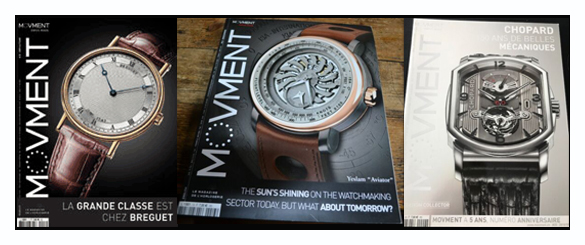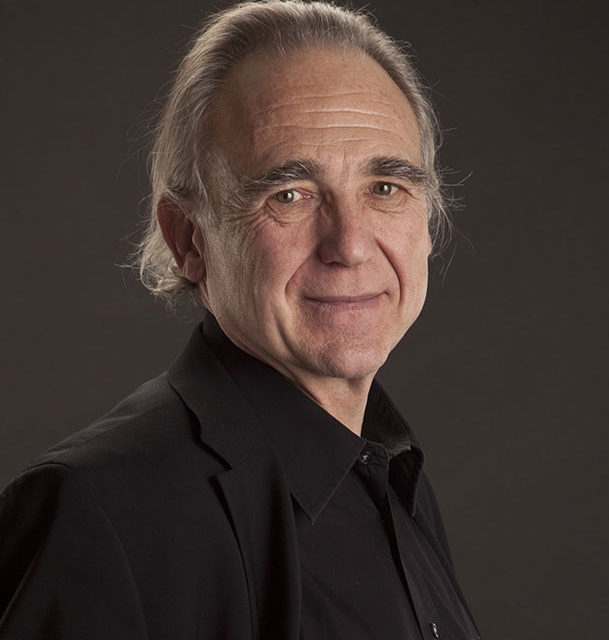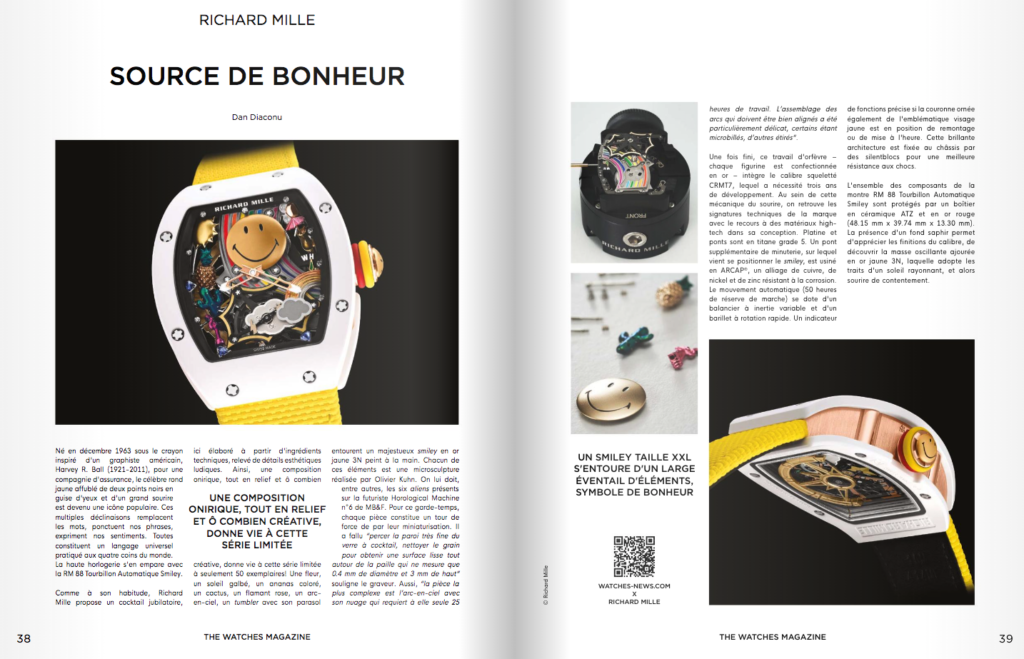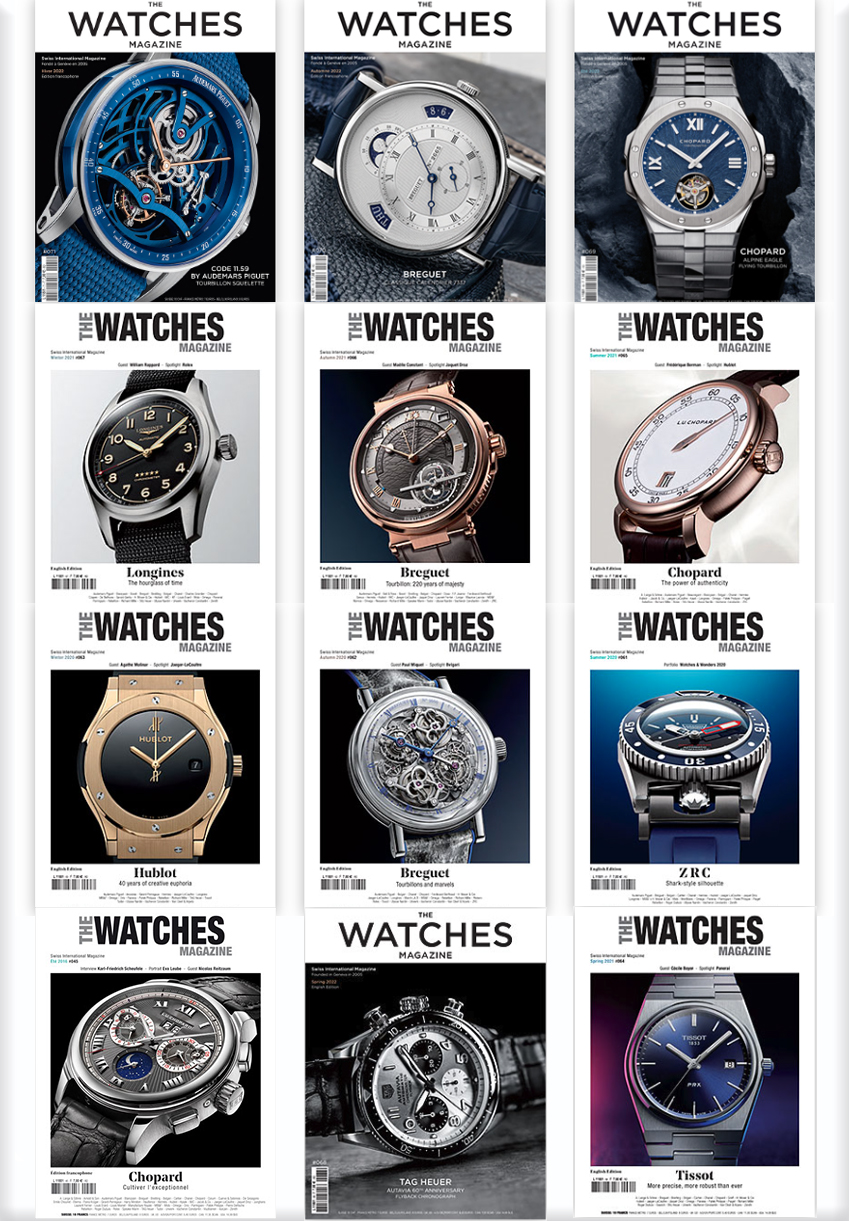The watch industry translations services Specialist
In the world of Swiss watchmaking, only the most precise translations will do. Atenao as a watch industry translations services specialist has been translating The Watches Magazine into English, German, Spanish, Chinese and Italian since 2010. This luxury quarterly publication showcases the most prestigious brands, in a combination of highly-polished editorial content and breathtaking photography. From Patek-Philippe to Chopard, by way of Rolex, Omega and Audemars Piguet, these masters of time and of time-keeping present The Watches Magazine with their latest creations, each one an icon of their legendary skill and expertise. Atenao crafts texts that sound as if they have been written in each language, rather than translated, so that none of the original text’s charm is lost.
In the world of watches, everything starts with a movement
When Alain Carrier, creator of MOVMENT Magazine1 came to us in March 2010 to translate his publication into English, Italian, German and Spanish, we could never have imagined that we would work on his next 50 magazines. Atenao was launched in 2001, and the acquisition of the MOVMENT account came about at a time when the translation agency was starting to make a name for itself in the world of language service providers. This partnership was a reflection of Atenao’s experience in the technical translation sector, and more specifically in the watchmaking sector.

The multilingual services world was changing rapidly. Translation agencies which had survived the April 2000 crash had gone digital (the famous “click and mortar” entities of the beginning of the century, as opposed to “bricks and mortar”), and the exclusively online agencies were aggressively marketing their wide range of services.
With each passing year, globalisation was increasing the number of translations purchased. Translation quality was, in turn, starting to decrease, following lower prices and squeezed budgets. Artificial intelligence and post-edition did not yet exist, and machine translation was rarely fit for the purpose. This was, in some ways, the golden age of translation agencies: not necessarily perfect, but a time when they could innovate and progress if they put in the necessary hard work, will and knowledge.
The publishing world underwent massive change with the explosion of online media. There had been talks of an online version of TWM in the pipeline, but it never came into being. Without a doubt, worldwide publication of a digital magazine was a tempting idea. But gravitating towards an online platform, the playground of the free-of-charge press, would mean opening up accessibility to a product and to brands which, by their nature, cannot easily be accessed. Doing so would undoubtedly reach an immense audience, but probably not the target readership; such a move would be the wrong strategy for the brand.


2010 – 2020: The path to maturity
At the beginning of this decade, Eric Othenin-Girard2 was amazed by the brilliant success of the Swiss watchmaking industry in his editorials, but expressed some regret: “these unscrupulous sellers (i.e. who sell items made from the cheapest parts available), who have adapted to suit the demands of emerging markets, in particular China, have done great damage to the tradition of high-quality Swiss watchmaking.”
The world of luxury watchmaking was undergoing huge changes. 2010-2020 was very much the decade of smartphones, tablets and smart watches which appealed to the younger generation, and made traditional watches, in all their precise splendour, seem outdated. Now more than ever, Swiss watches were becoming pieces of jewellery rather than useful objects. However, the Swiss watchmaking industry was breaking economic records. For printed media, on the other hand, things were not so simple. People were consuming more and more content on smartphones and tablets, advertising budgets were being allocated to the web, and change was also in the air for TWM.
Just as the magazine and its editorial team were evolving, so was its translation; teams were reshuffled, proofreaders were added. Translation and proofreading by native speakers was still an entirely human process, but the use of Computer-Assisted Translation technology became a vital tool. The translation memories (TMs) and glossaries grew with the translation of each new edition of the magazine. Vocabulary choices were hotly debated, and the idea of re-writing certain parts of the editorials or opinion pieces to adapt them to the target country’s readership started to gain traction. This would turn out to be the beginning of “transcreation”, the creative transformation of texts that would be called for in all press translations ten years later.
The uncertainty of the Covid era
Following lockdown and the cancellation of important trade shows (Baselworld, Watches&Wonders Geneva), the industry found itself in financial trouble, with brands exercising caution and slashing R&D and advertising budgets. It was a difficult time for all involved: for the brands, who saw their sales figures plummet, and for those who worked with them and felt the impact of this domino effect. This included TWM and, therefore, Atenao. This widespread bleak outlook meant fewer articles in TWM at the time, although the number of pages remained unchanged.
Multilingual services have evolved enormously over the last twenty years; in 2023, professional translation is generally split into four main categories:
- Post-edition, which involves a professional translator proofreading and correcting the terminology and syntax of a machine translation. Obviously, this type of translation is never appropriate in a magazine.
- 100% human translation, which means a native, idiomatic translation by a professional translator, without the use of machine pre-translation. This is the most frequently used type of translation.
- ISO 17100 certified translation, which adds an extra stage to human translation: a review and terminology verification, carried out by a linguist and one or more translators.
- And finally, transcreation, which is to translation what Switzerland is to watchmaking. Transcreation involves a creative rewriting of a human translation, to adapt the content for and to strike a chord with the target readership.
The “post-Covid era” – because let’s not fool ourselves, one day we will refer to the “pre-Covid era” just like the “pre-Colombian era”, another turning point for civilisation, first and foremost for western civilisation – ushered in “woke culture” and the challenging of the idea of gender, even in the watchmaking industry. As explained in a Business Montres editorial, by producing gender-specific watches, Swiss watchmakers risk alienating their best and most strategic female clients, who belong to the younger generation.
Woke culture is also about deconstruction, juggling different viewpoints, and political correctness which can sometimes lead to differences of opinion in editorial translation. In an editorial, an author’s thoughts are laid bare, opening up more than in a regular article. Editorial writers are demanding, and tend not to tolerate the distortion of their words. And when you answer to a journalist like Sharmila Bertin3, who happens to be a graduate of the prestigious ISIT translation school, you know that accuracy is crucial and extreme precision is key.

We have always paid special attention to the editorial of TWM, to guarantee a “perfect” result. However, the use of transcreation and liberal, creative translation can also throw up a few issues for the writers. Bertrand Daudey4 remembers one such episode: “It was in 2020 – our Chinese translator had left a comment on Sharmila Bertin’s opinion piece, which she had found too aggressively feminist for Chinese readers, leading her to tone down her own translation.” The topic being discussed was “gendered” watches. Our translator mentioned the huge cultural differences between China and the West when it comes to the idea of gender, pointing out their typically reserved nature and lack of grand displays of emotion. Members of the Chinese elite (or those who aspired to be a part of it) could have been put off by Sharmila’s no-holds-barred style, and distanced themselves from the magazine. In China patience is most definitely a virtue, and problems are met with courage and wisdom, in order to work on the heart, cleanse the soul, and evolve spiritually. The absence of aggression is a key part of the Chinese mindset. With this in mind, our translator had transformed Sharmila’s unabashed feminism into an ode to feminine fragility and romance, which obviously did not go down well with the Editor-in-Chief of TWM.
So was this high treason? Or betrayal of the author by the translator, who took too many liberties and twisted her words and thoughts in the editorial? One thing is certain; the article lost its hard-hitting tone and stance, which had originally made it stand out. On the other hand, the Chinese translation gained in conformity what it had lost in precision and impact.
On the road to 2030
 The new decade in watchmaking started with a shock: the end of Baselworld, marking the end of an era. The flagship trade show had been bringing the worlds of watchmaking, jewellery and precious stones to life since 1917. Every year, all the big international names from the industry flocked to the must-attend event: creators, buyers, sellers, collectors, reporters and impassioned enthusiasts. Baselworld hosted up to 1,500 exhibitors from 40 different countries in 140,000 square metres, and over 150,000 visitors. That was in 2015, before disaster struck. The last event in 2019 was, as one might say, the end of times.
The new decade in watchmaking started with a shock: the end of Baselworld, marking the end of an era. The flagship trade show had been bringing the worlds of watchmaking, jewellery and precious stones to life since 1917. Every year, all the big international names from the industry flocked to the must-attend event: creators, buyers, sellers, collectors, reporters and impassioned enthusiasts. Baselworld hosted up to 1,500 exhibitors from 40 different countries in 140,000 square metres, and over 150,000 visitors. That was in 2015, before disaster struck. The last event in 2019 was, as one might say, the end of times.
But Atenao and TWM’s adventure did not end there. After 13 years of successful and uninterrupted collaboration (ACE Publishing SA, who publish TWM, are one of our top 5 clients of all time), our paths are constantly crossing. We may be from different planets, but Atenao and TWM are now almost like an old married couple, and our relationship with Sharmila Bertin and Alain Carrier has evolved from being simply commercial, to being one of mutual trust and affinity, driving each other’s progress.
We started working together on TWM for their 21st issue, and we are currently translating issue #72. 51 magazines of around 100 pages in 6 languages brings us to almost 30,000 pages translated. You could say that we know luxury watches like the back of our (left) hand.
Thanks in large part to TWM, Atenao has been able to increase its level of expertise and experience in translations for the watchmaking industry over the years, further developing its luxury translations department. Working on translations, interpreting, audiovisual and web projects with prestigious brands such as Chopard, Mondaine, Luminox, Corum, Breva Genève, Audemars Piguet, Vacheron Constantin, Chronopassion, Blanchefontaine and Guess has assured Atenao’s success in Asia, where a subsidiary was created in 2020 (Tokyo, Japan) and in the Middle East, where our MENA hub is now situated in Tunis (Tunisia).
| How to avoid magazine translation faux pas
Firstly, a few ground rules: |
||
| • Keep a Translation Memory, and most importantly a glossary, for each language pair. They should be used and updated by the project manager, the client, the translators and the proofreaders. There is nothing worse than seeing your sector-specific vocabulary mangled or badly translated. • Limit transcreation to editorials and opinion pieces, and make sure to discuss transcreation choices with the authors. Back-translate transcreated articles, editorials and opinion pieces. • Choose your translators for their gift with words. Not all translators are as talented as Brice Matthieussent5, but some are not far off. These are the ones who must be called upon for press translations. • Never translate or interpret brand or model names, unless the brand has an officially approved translation. This rule seems simple, but can be less so for Asian languages written in ideograms. • Always have a proofreading stage after translation (ideally by another translator, as required by the ISO standard 17100) • Carry out another review after the design mockup is completed, if the translation agency is not in charge of desktop publishing. |
||
1 Movment magazine was launched in 2005. It kept this name until its 24th edition, and then became The Watches Magazine from issue 25.
2 Originally from Neuchâtel in Switzerland, Eric Othenin-Girard was a highly-respected reporter in South-East Asia, Vietnam and the Middle East before he became news editor for French-language news broadcasting on Swiss radio. Founder of the federal certificate in watch sales and of the “Watch Sales Academy”, the watch enthusiast had never missed a single Baselworld since he started attending in 1971.
3 Sharmila Bertin, Editor-in-Chief of TWM
4 Bertrand Daudey, Director of Atenao.
5 Brice Matthieussent is probably the most well-known French translator. He has translated novels by Richard Ford, Jim Harrison, Henry Miller, Paul Bowles, Jack Kerouac, Charles Bukowski, Gore Vidal, John Fante, David Payne, Thomas Pynchon, Henry David Thoreau and Robert McLiam Wilson into French.
Are you a watchmaking industry professional, looking for an expert for your linguistic needs? Contact us now.







